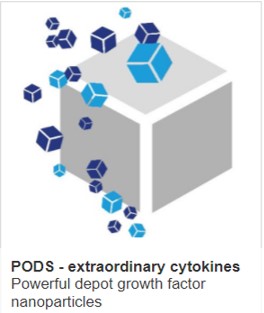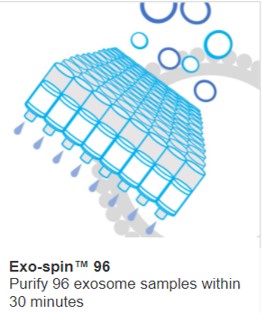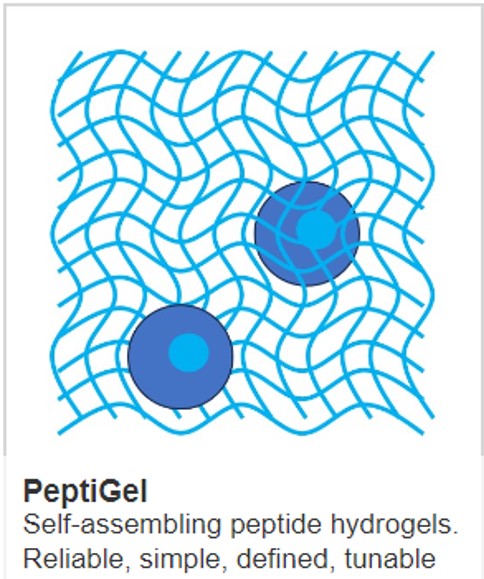Using depot formulation for chemotaxis studies

Creating a chemokine or growth factor concentration gradient is a crucial lab technique for studying cell migration, particularly in neuroscience, immunology and cancer research. Sustained release growth factors can simplify chemotaxis studies.
Creating a stable concentration gradient requires a source of the protein, and must take into account the protein’s diffusion characteristics, degradation rate, and any metabolism by the cells. The gradient’s duration needs to be considered since some responses to the gradient, such as cell movement or neurite extension in neuronal cells, can take days to occur.
To generate protein concentration gradients, a range of methods have been developed. These include
- Transwell Migration assays
- Microfluidic devices
- Embedded formulations
Transwell Migration Assay
A Transwell chamber (shown diagrammatically in A above) is simply a cell culture well which has a porous membrane separating it from the lower cell chamber. These devices can be used to measure cellular response to a chemotactic agent such as chemokines. The lower chamber contains a high concentration of chemokines, while the upper chamber contains the cells suspended in a medium without chemokines. A gradient is created between the two chambers. The chamber is typically used to test the effect of a test substance on the migration of cells across the porous membrane from ne chamber to another. This number of cells that cross the membrane to end up in the lower well is counted giving an indication of the potency of the chemotactic material under test.
- Preparation: The Transwell membrane is coated with a thin layer of extracellular matrix proteins if necessary to mimic the in vivo environment.
- Chemokine Solution: The chemokine solution is added to the lower chamber. The concentration is optimized based on preliminary experiments or literature values.
- Cell Seeding: A cell suspension is added to the upper chamber.
- Incubation: The transwell in an incubator for a specified period, usually 2-24 hours, depending on the cell type and chemokine.
- Analysis: After incubation, cells that have migrated through the membrane to the lower chamber are counted. This can be done using a hemocytometer, flow cytometry, or by staining and imaging.
Microfluidic Devices
These are generally more sophisticated than Transwell chambers. Shown in B above, they can be created with a variety of architectures to achieve specific effects: Whereas Transwell chambers measure the stochastic effect of numbers of cells moving from one chamber to another, microfluidic devices can be used to generate phenotypic effects on cells such as neurite formation which can be observed in real time if needed.
- Preparation: Microfluidic device fabrication uses lithography to create the microfluidic channels in, for example, a PDMS (polydimethylsiloxane) mould. The design requires separate loading inlets for chemokines and cells and outlets for waste.
- Gradient Generation: The chemokine solution is injected into one inlet and a buffer or medium into another. The design of the channels allows for the formation of a stable gradient across the device.
- Cell Loading: Cells are introduced into the device through a designated inlet. The cells are exposed to the gradient as they migrate through the channels.
- Incubation and Observation: Time-lapse microscopy is sometimes used to track cell movement in real time. Cell migration patterns can be analyzed using image analysis software. Parameters such as speed, directionality, and chemotactic index can be quantified.
Embedded hydrogel Assays
These assays utilize a depot source of growth factors.
These assays involve embedding cells in a gel matrix, shown in C above, which can be used to create a 3D environment for studying cell migration.
- Gel Preparation: The hydrogel is poured into a petri dish or multi-well plate and allowed to solidify.
- Gradient Formation:
- Wells can be created within the agarose of the cells mixed in before the hydrogels solidifie
- The chemotactic agent (such as a chemokine) is placed in an adjacent position. PODS® chemokines are particularly useful as they can be readily positioned in a discreet area and sustainably release the chemokine to generate a long-lived gradient.
- Incubation: The set up is placed in an incubator to allow cells to migrate in response to the chemokine gradient.
- Observation and Analysis: Use microscopy to observe cell movement. Staining or fluorescent labelling can help visualize cells within the gel. Migration patterns can be analysed using image analysis software.
Creating gradients using formulated depot-release chemokines.
Gradients can be set up in simple experiments without microfluidics or embedding. An example is shown in the video below with PODS (protease-responsive, depot formulation growth factors) containing containing nerve growth factor (NGF) positioned in a discrete area on the surface of a culture dish to elicit a chemotactic response from Neuronal-like PC12 cells.
Factors to consider when creating concentration gradients
- Gradient Stability: Ensure that the gradient remains stable over the course of the experiment. This may require optimizing the concentration and diffusion time of the chemokines and the use of a sustained depot-release formulated chemokine such as PODS®.
- Cell Type Specificity: Different cell types may respond differently to chemokine gradients. It is important to optimize conditions such as chemokine concentration and incubation time for each cell type.
- Controls: Include appropriate controls, such as cells in the absence of a chemokine gradient, to ensure that observed effects are due to chemotaxis.
- Reproducibility: Perform multiple replicates to ensure that results are consistent and statistically significant.
- Data Analysis: Use software tools for quantitative analysis of cell migration. Parameters such as migration speed, directionality, and chemotactic index can provide insights into the cells’ response to the gradient.
-
More information on PODS is available here
MAIN IMAGE Pipetting PeptiGel CREDIT: Cell Guidance Systems Ltd
Learn more about powerful technologies that are enabling research:



